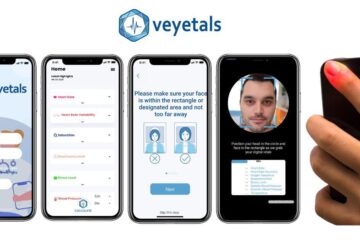Image Credit: Canva
Diabetes is a chronic health problem that affects millions of individuals worldwide, and it requires ongoing medical treatment as well as lifestyle changes to be effectively managed. People with diabetes, however, can live healthy and productive lives, even at work, with adequate care and treatment. This post will go over the recommended practises for controlling diabetes at work.
Understanding Diabetes
Before discussing how to manage diabetes at work, it is critical to first understand the condition. Diabetes is a chronic disease that arises when the body does not create enough insulin or does not use the insulin that it does make adequately. Insulin is a pancreatic hormone that regulates blood sugar levels.
Diabetes is classified into two types: type 1 and type 2. Type 1 diabetes develops when the body’s immune system targets and destroys insulin-producing pancreatic cells. To control their blood sugar levels, people with type 1 diabetes must utilise insulin injections or an insulin pump. Type 2 diabetes, on the other hand, occurs when the body develops insulin resistance or fails to produce enough insulin. Type 2 diabetes is frequently treatable with diet, exercise, and medication.
Communicating with Employers
Diabetes management at work begins with open communication between people and their employers. Employers should be informed of the employee’s diabetes diagnosis and any accommodations that may be required. Employees should be allowed to discuss their diabetes with their bosses and be informed of their rights under the Americans with Disabilities Act (ADA).
Employers are required by the ADA to make reasonable accommodations for employees with disabilities, including diabetes. Flexible work schedules, access to a private room to administer medication, and time off for medical visits are examples of reasonable accommodations.
Keeping Blood Sugar Levels Under Control
Monitoring blood sugar levels is one of the most important components of diabetes management. Employees with diabetes should have a plan in place to frequently monitor their blood sugar levels, which may include testing at specified times throughout the day, recording their food intake, and monitoring their physical activity levels.
Employees with diabetes should also have access to the diabetic supplies they require at work, such as insulin and glucose metres. They should have a designated space where they may store their supplies and safely dispose of dirty needles.
Physical Activity and Healthy Eating
A nutritious diet and regular physical activity can help control blood sugar levels and prevent diabetes-related problems. Employees with diabetes should have access to nutritious meal options like fresh fruits and vegetables, lean meats, and whole grains while at work.
Employers might encourage workplace physical activity by providing exercise programmes, gym memberships, or standing workstations. Even simple activities like stretching or going for a walk on a regular basis might assist improve blood sugar levels and overall health.
Stress Management
Because stress has a significant impact on blood sugar levels, it is critical to manage stress effectively. Diabetes employees should be encouraged to use stress-reduction tactics such as meditation, deep breathing, or taking a break to do something they enjoy.
Employers can also help minimise workplace stress by encouraging open communication, creating a healthy work atmosphere, and providing tools such as employee assistance programmes (EAPs).
Conclusion
Diabetes management at work necessitates a multifaceted approach that involves open communication, blood sugar monitoring, balanced food and physical activity, and stress management. Employers can help diabetic employees by making reasonable modifications, providing required supplies, and fostering a positive work atmosphere. Employees with diabetes can successfully control their disease while still thriving in their jobs if they collaborate.
Introducing Veyetals, the cutting-edge contactless vitals monitoring app that is revolutionizing healthcare management. Our cloud-based API is lightweight and seamlessly integrates with the healthcare apps and platforms that matter to you most. With Veyetals, you can measure patient vitals in real-time, enhancing the continuum of patient care and improving health outcomes.
But Veyetals doesn’t stop there. Our app is interoperable with other health management solutions, ensuring information sharing between different systems and providing a holistic view of patient health. Plus, our easy-to-use interface makes it simple for healthcare providers to stay on top of vital signs and respond quickly to changes in patient health.
Ready to join the future of healthcare management? Contact us HERE to learn more about Veyetals. And don’t forget to follow us on LinkedIn for the latest updates and insights.



